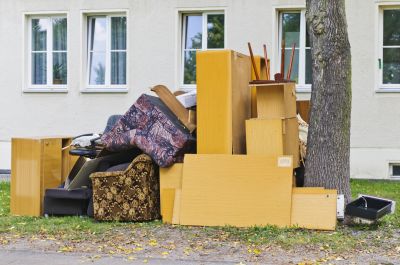Ultimate Guide To Furniture Strippings Products For Professionals
Find out which high-performance products are essential for furniture restoration experts seeking reliable results.
 Furniture stripping is an essential step in furniture restoration and refinishing projects. It involves removing old finishes, paints, varnishes, or stains to prepare the surface for a new finish. The process can vary depending on the type of furniture, the existing finish, and the desired outcome. Using the right products ensures the stripping process is efficient, safe, and effective, minimizing damage to the underlying wood or material.
Furniture stripping is an essential step in furniture restoration and refinishing projects. It involves removing old finishes, paints, varnishes, or stains to prepare the surface for a new finish. The process can vary depending on the type of furniture, the existing finish, and the desired outcome. Using the right products ensures the stripping process is efficient, safe, and effective, minimizing damage to the underlying wood or material.
Top Overall Option
Versatile Furniture Stripping Gel
A highly adaptable gel-based stripping product that offers effective removal of multiple types of finishes. Its thick consistency allows precise application on detailed and vertical surfaces, reducing drips and mess. Suitable for various furniture restoration projects, it provides a balance of potency and control, making it a popular choice for DIY enthusiasts and professionals alike.
Types of Products For Furniture Strippings
Chemical Liquid Strippers
Fast-acting liquid solutions designed to dissolve old finishes efficiently, suitable for large or flat surfaces.
Gel Strippers
Thick gel formulas that adhere well to vertical surfaces and intricate details, minimizing drips and mess.
Foam Strippers
Lightweight foam products that lift finishes with minimal odor, ideal for quick projects.
Eco-Friendly Strippers
Less harsh chemical options that are safer to use and easier to clean up, often biodegradable.
Heat Guns
Tools that use heat to soften finishes, allowing for scraping and removal without chemicals.
Scrapers and Putty Knives
Manual tools essential for removing loosened finishes after applying stripping products.
Steel Wool and Abrasives
Fine abrasive pads used for smoothing surfaces after stripping or for light touch-ups.
Sanders and Orbital Sanders
Power tools that facilitate thorough surface preparation after stripping.
Protective Sealants
Products used after stripping to protect the wood surface before refinishing.
Cleaning Solvents
Used to remove residual stripping agents and prepare surfaces for finishing.
Paint Removers
Specialized products for removing stubborn paints or coatings from furniture.
Chemical Stripping Paste
Thick paste formulations that stay in place longer, suitable for detailed or vertical surfaces.
Vinegar and Natural Alternatives
Natural solutions that can help soften finishes, often used in conjunction with manual scraping.
Solvent Sprays
Aerosol-based products for quick application and removal of certain finishes.
Stripping Pads
Reusable pads designed for manual stripping or smoothing surfaces post-removal.
Popular Choices
Widely used for their effectiveness on various finishes, available in many formulations.
Favored for their ease of control and minimal dripping, especially on detailed furniture.
Growing in popularity due to safer handling and easier cleanup.
Popular for quick, chemical-free removal of paint and finishes.
Commonly used in conjunction with chemical products for smooth results.
Preferred for their efficiency in preparing surfaces after stripping.
Often selected for stubborn or multiple layers of paint.
Popular among DIYers seeking natural methods for softening finishes.
Essential tools that are frequently used during the stripping process.
Safety equipment like gloves and masks are commonly recommended for safe handling.
Chosen for their convenience and ease of use on various furniture types.
Popular for their targeted application and effectiveness on intricate details.
Convenient for quick touch-ups and small projects.
Often used in combination with chemical products for thorough removal.
Selecting appropriate stripping products requires understanding the different types available, such as chemical strippers, gel formulas, or eco-friendly options. Chemical strippers are often potent and fast-acting, suitable for heavy-duty removal tasks, while gel-based products offer more control and less drippiness, making them ideal for vertical surfaces or intricate designs. Eco-friendly options typically use less harsh ingredients, providing a safer experience for the user and surrounding environment.
Proper application techniques, safety precautions, and disposal methods are crucial when working with furniture stripping products. Always work in well-ventilated areas, wear protective gear such as gloves and masks, and follow manufacturer instructions carefully. After stripping, surfaces should be thoroughly cleaned and sanded before applying a new finish to ensure optimal adhesion and appearance.
Whether you are restoring antique furniture or updating a modern piece, choosing the right product can make the process smoother and more predictable. Consider the type of finish you are removing, the complexity of the furniture, and your comfort level with handling chemical products. With the right tools and products, furniture stripping can be a manageable DIY task that revitalizes old pieces into beautiful, refreshed furniture.
Key Buying Considerations
- Type of finish to be removed (paint, varnish, stain, etc.)
- Surface material and its sensitivity to chemicals or abrasives
- Project size and whether a large or small quantity is needed
- Preferred method of application (gel, liquid, foam, heat)
- Ease of cleanup and disposal requirements
- Safety features and protective gear recommendations
- Environmental factors, such as ventilation and workspace setup
- Potential odor and fumes during application
- Compatibility with other restoration products or tools
- Level of detail in furniture design that may influence product choice
- Budget constraints and cost-effectiveness
- Experience level with chemical handling and stripping techniques
- Time constraints for completing the project
- Availability of supplementary tools like scrapers or sanders
- Long-term durability of the new finish after stripping
This content contains affiliate links. We may earn a commission if you make a purchase through these links, at no additional cost to you.
